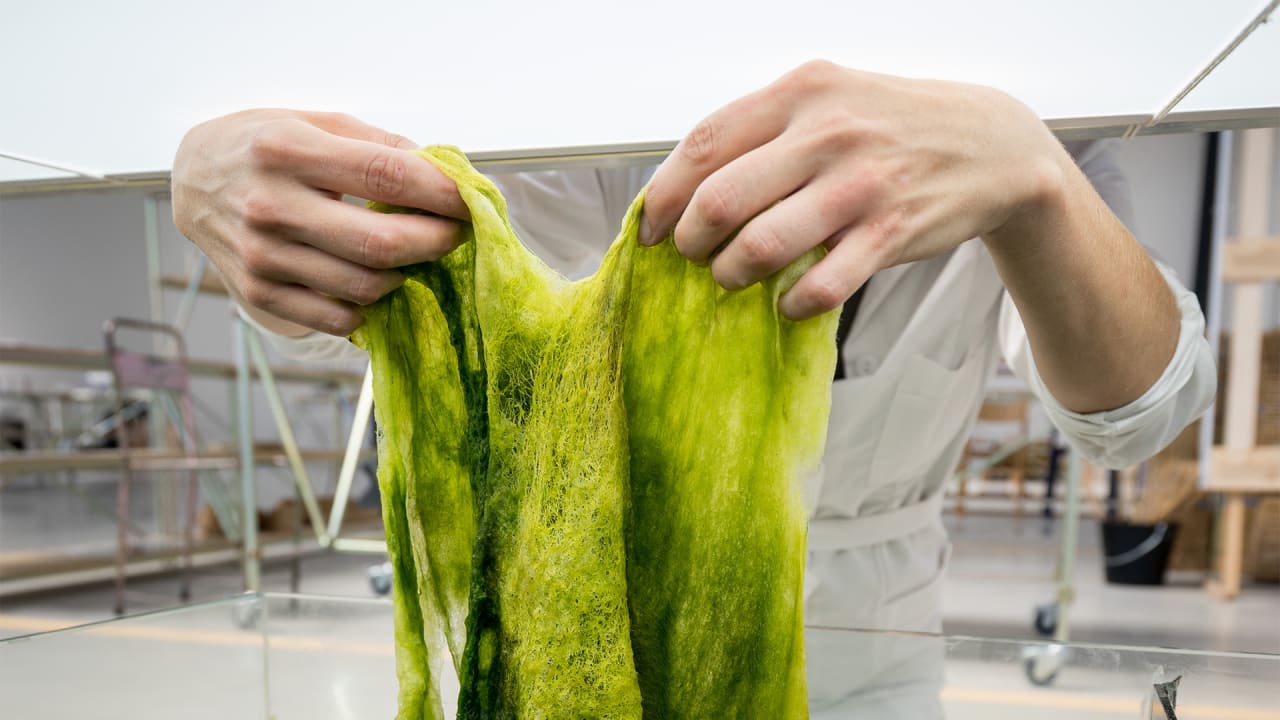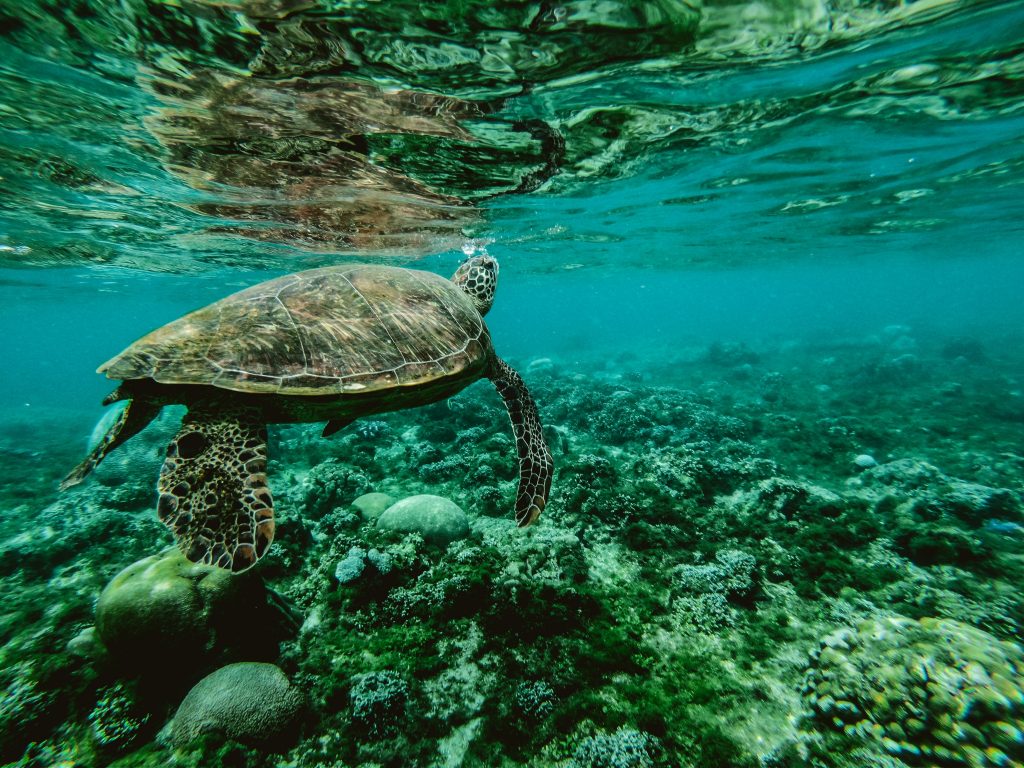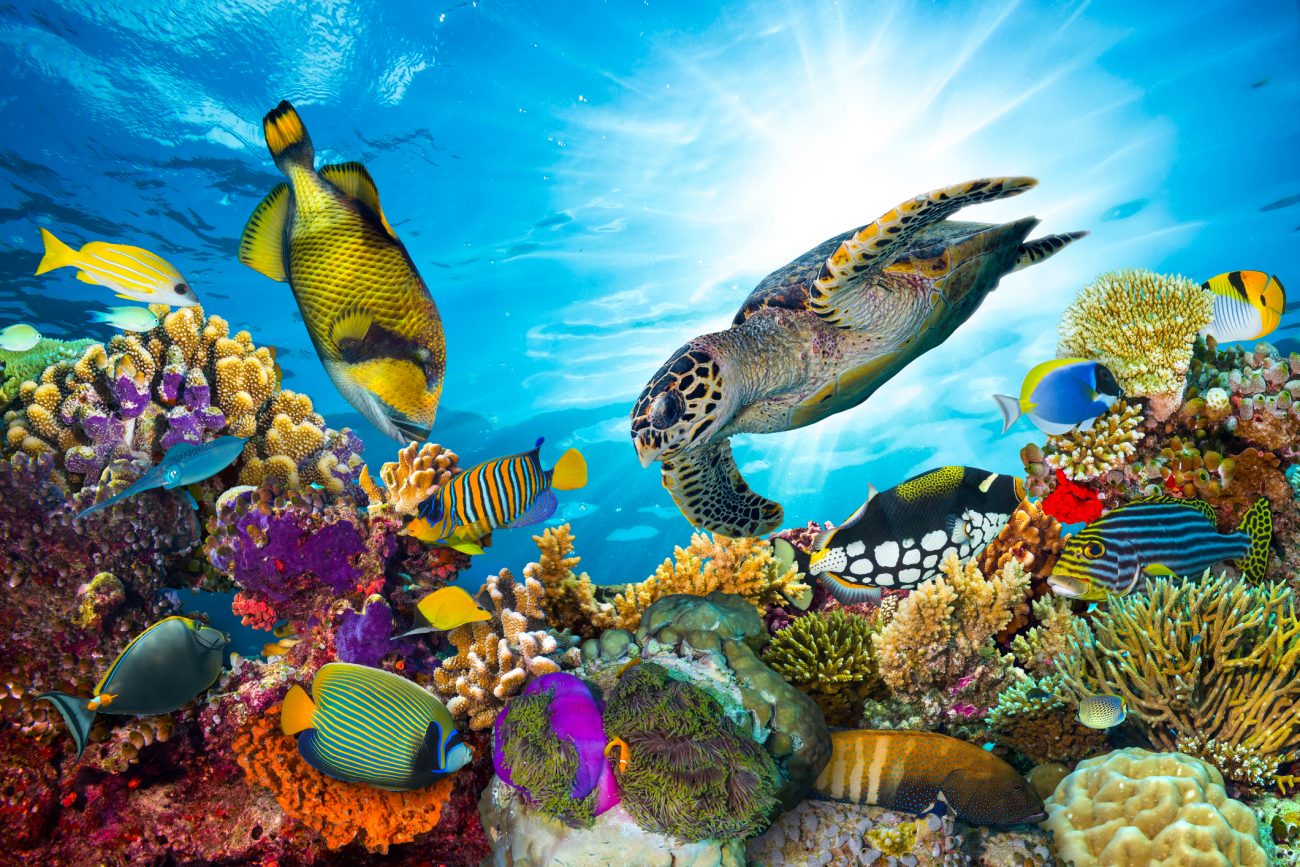The Earth’s oceans are currently under attack from dangerous human activities like overfishing and oil spillages, as well as the effects of marine debris pollution and climate change. (Gall & Thompson, 2015; Sigler, 2014). Marine life, in particular sea turtles, cetaceans, reef inhabitant fish species, and marine birds, are at severe risk. This article describes some of the innovations that help protect aquatic creatures, and the positive impacts that they are having on marine environments.
Plastic: A Major Threat to Marine Life
The National Ocean Service (NOAA, 2021) estimates that oceans cover approximately 71% of the Earth’s surface. Furthermore, around three billion people rely on seafood as their main source of protein (World Wildlife Fund, 2021). However, studies show that over five trillion pieces of plastic have ended up in our oceans, often leading to its ingestion by sea creatures and creating hazards that cause harm to marine life. Fishing gear such as nets, vessels, and jigs damage ocean habitats and, as of 2020-21, non-biodegradable gloves and face masks pose yet another threat.
Coral Reefs: Vital to Saving Sea Habitats
In the ocean, coral reefs sustain most of the marine life and maintain the oceanic balance. A large percentage of herbivore fish species live in coral reefs or seagrass beds. However, a number of human activities severely affect this habitat. Firstly, the presence of waste inhibits the growth of coral and the life it supports in the reef. Secondly, overfishing reduces the fish population, which further inhibits coral growth. Thirdly, climate change forces marine animals to move from their natural feeding grounds due to the increase in water temperature (Poloczanska et al., 2016).
Human activity has directly caused the deterioration of ocean environments. However, a number of innovations have been developed to protect marine life and restore underwater habitats. Here are three options currently in use:
1. Sustainable product packaging
Waste is a key factor in marine degradation, with many underwater creatures destroyed by plastics in the ocean. Most of these are turtles that suffocate in plastic bags and containers.
To remedy this issue, Algotek has produced a sustainable packaging solution with algae-based plastic. The material is designed to break down in the ocean and is not harmful to sea creatures if ingested.
Switching to this kind of sustainable packaging also benefits the logistics and supply chains of producers as it makes food packaging and handling easier. Plastic remains a cheap packaging method but algae-based products provide a competitive and sustainable alternative.

Similarly, Saltwater Brewery has created an edible beer ring to reduce harmful waste. Turtles tangled in beer rings are often the first thing that comes to mind when we think about marine pollution. However, Saltwater Brewery’s wheat and barley-based rings do not damage the ocean environment and can safely be consumed by sea creatures. Like algae-based plastics, they are a sustainable solution that protects marine life.

2. Artificial reefs
Artificial reefs seek to re-populate existing and depleted coral reefs and grow them into healthy ecosystems. The aim is to help support some 4,000 species that rely on coral reefs for food and shelter (Lemoine et al., 2019). This innovation involves sinking large metal or concrete modules near to an existing reef. Over time, coral and aquatic plants spread over the module and grow on its surface. This, in turn, attracts species of sea creatures and provides more food and shelter in the reef environment. Artificial reefs are especially helpful in restoring biodiversity in our oceans.
Site selection for artificial reefs is important because an inappropriate location can cause damage to existing marine life. Marine professionals therefore carefully map reef areas to find the ideal location to sink a module.
3. Catch Monitoring
Although not as glamorous as artificial reefs, catch monitoring is an essential innovation that protects marine life from overfishing (Russo et al., 2021). The sophisticated monitoring software, Transparensea, records the amount of fish in a specific area. This allows the fishing industry to identify which areas are in danger of overfishing and let at-risk habitats replenish over time .
Catch monitoring also allows marine conservation agencies to observe areas and particular species that require special protection.
What Can We Do to Protect Marine Life?
There are so many ways that we can each help protect marine life on a small scale. The first is to keep an eye out when visiting the beach, and collect any waste or litter you may see. This rubbish is in close proximity to the ocean and can easily reach the water with onshore winds or tide changes – ultimately endangering marine life. Purchasing products with biodegradable packaging, or no packaging at all, makes an immense difference to the amount of waste in the ocean. Finally, purchasing sustainably sourced fish greatly protects fish stocks and ocean biodiversity.
These are just a few of the proactive measures we can practise to make the marine environment a friendlier place. So let’s THRIVE together to make our oceans plastic free and the best it can be for marine life.
